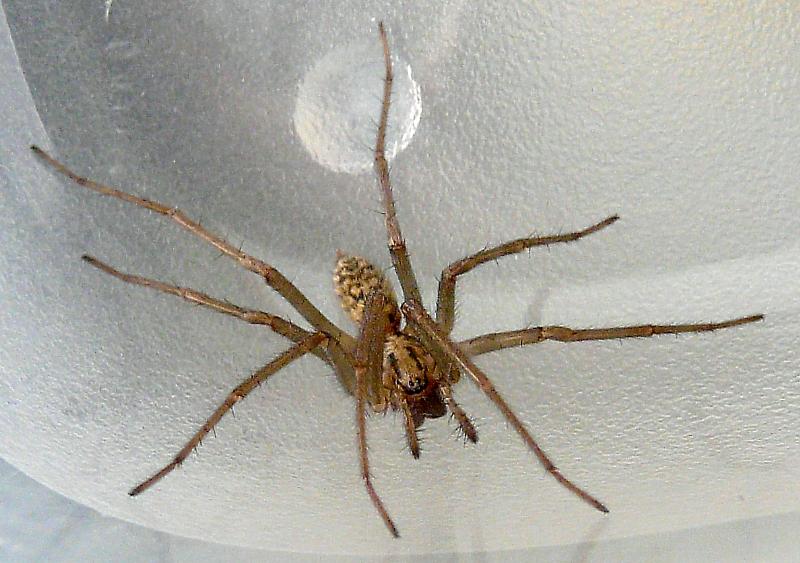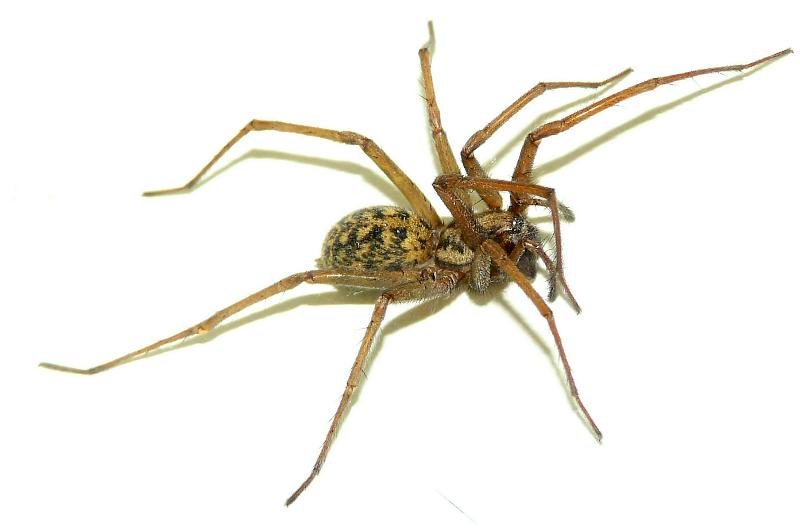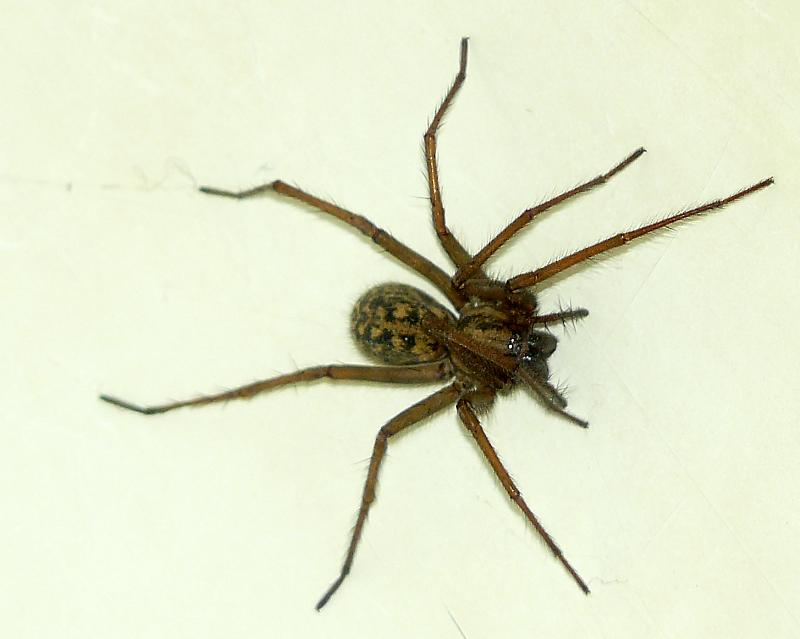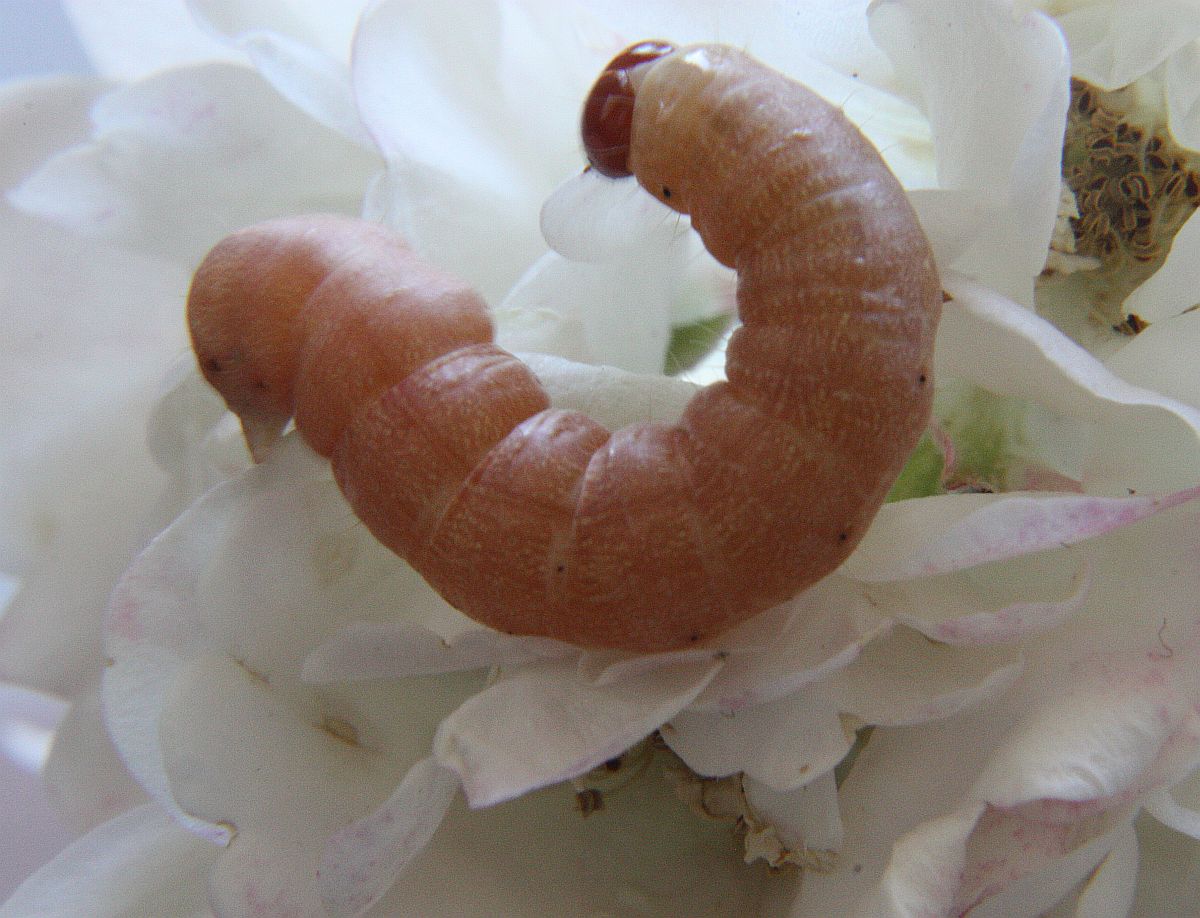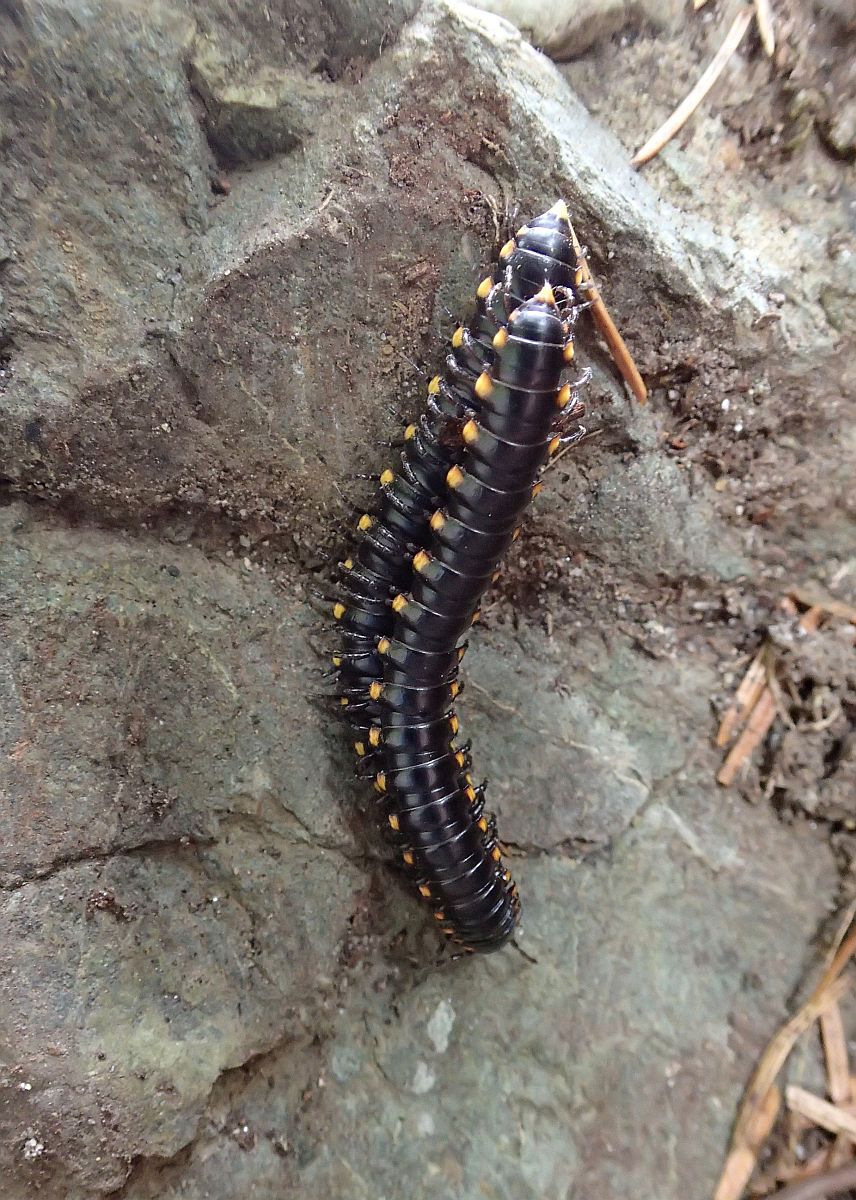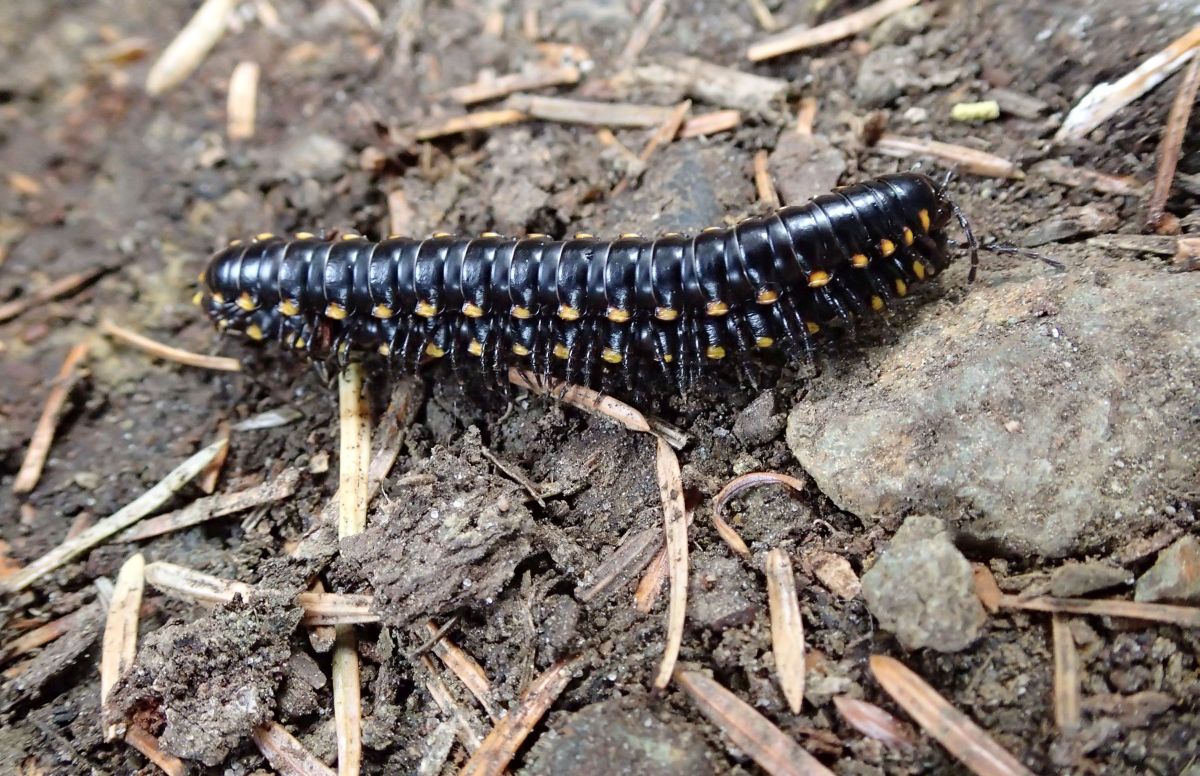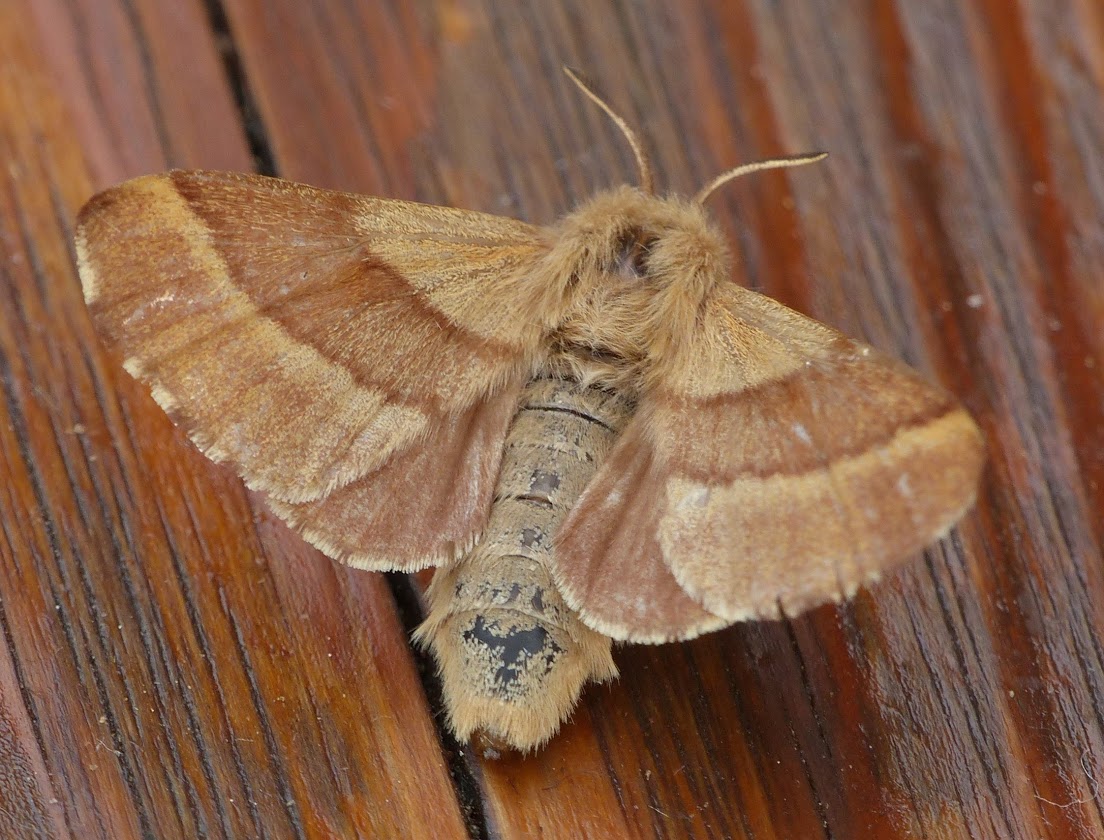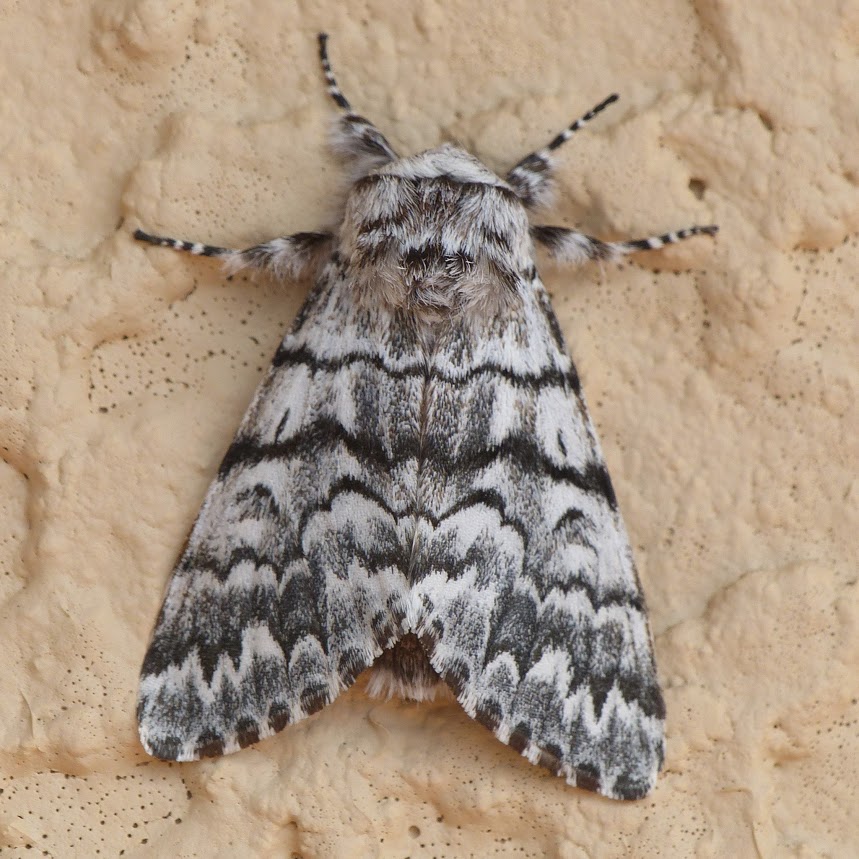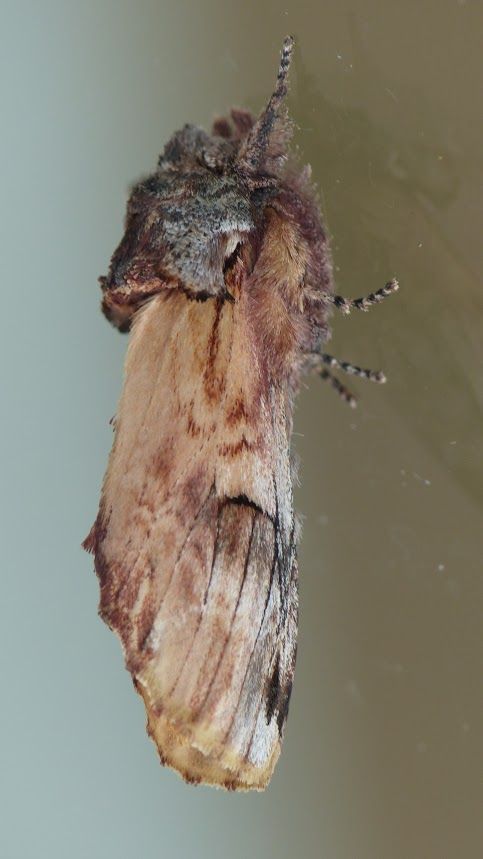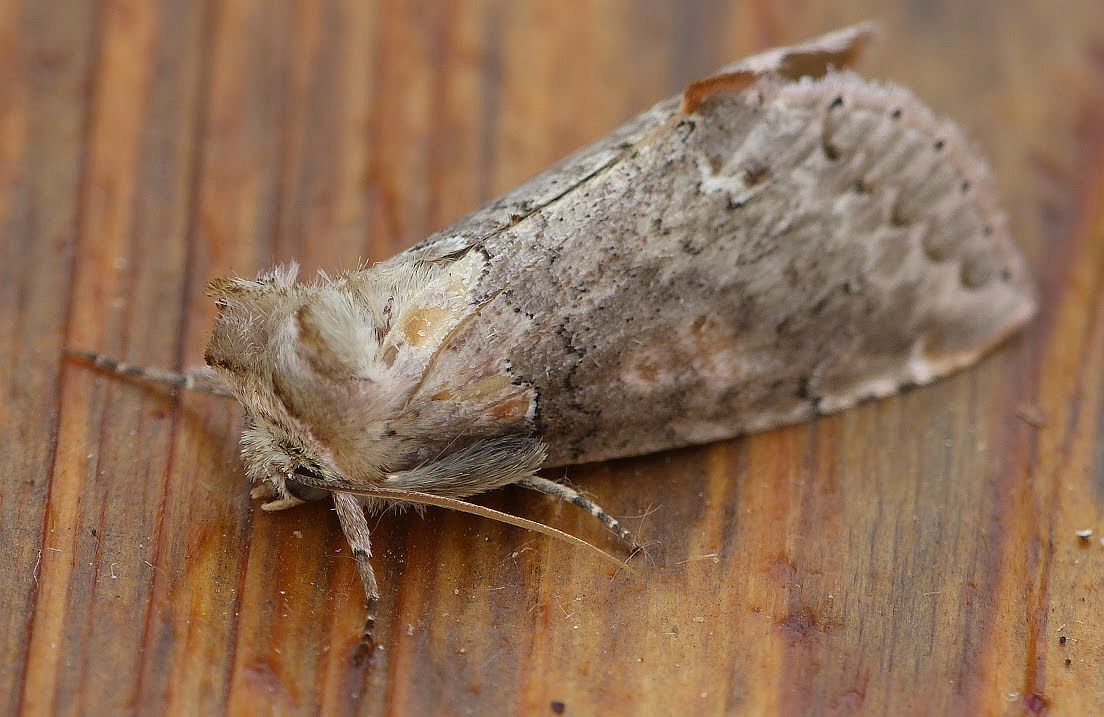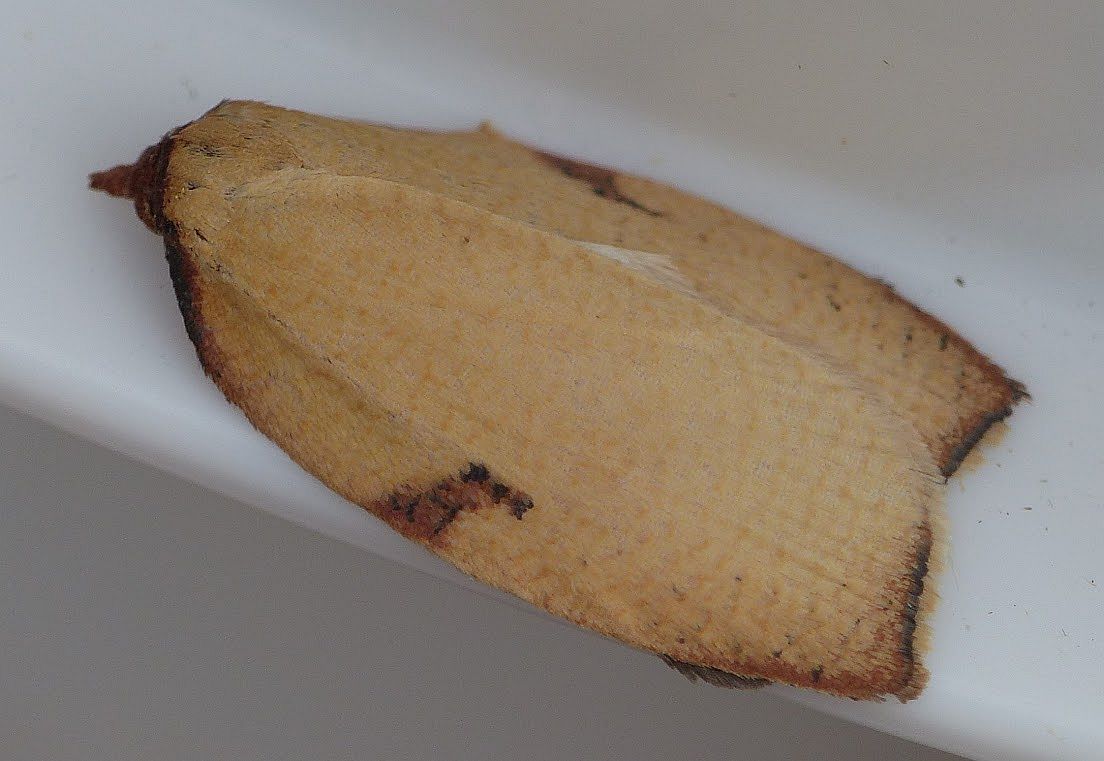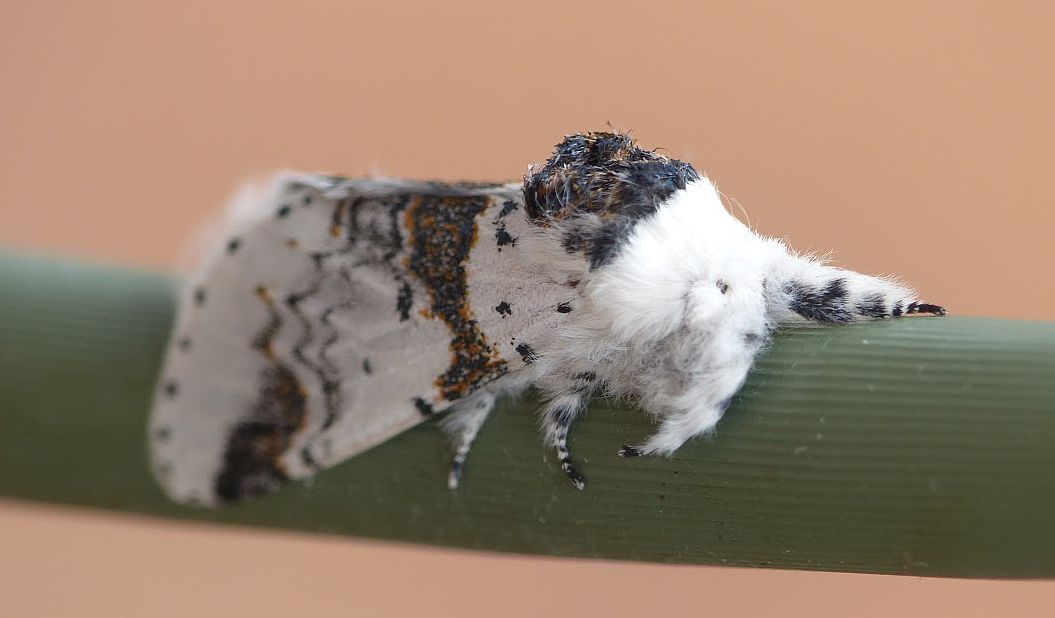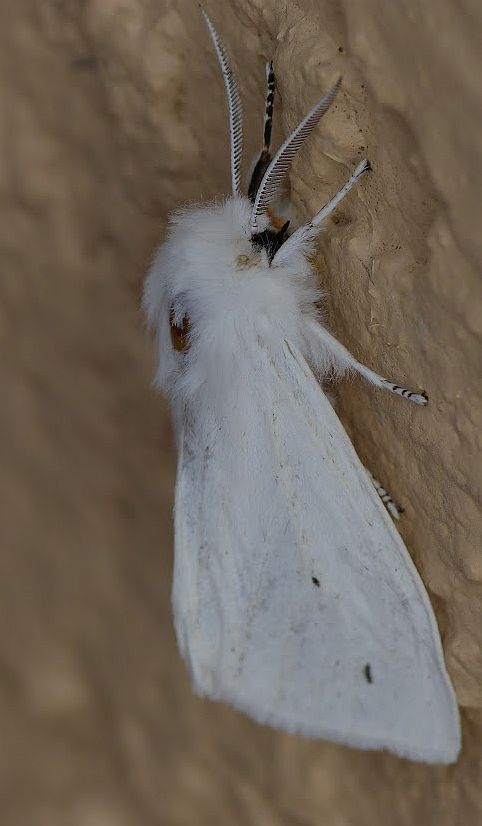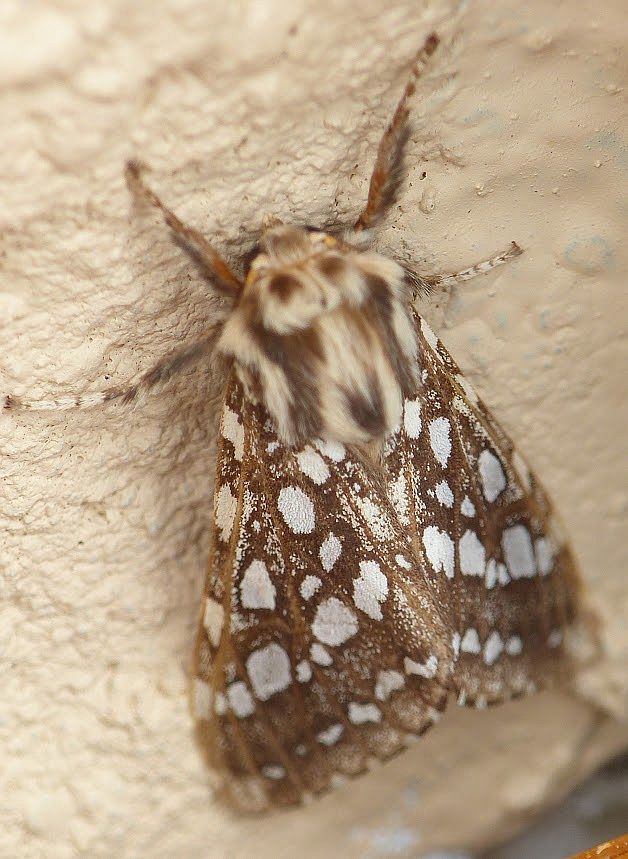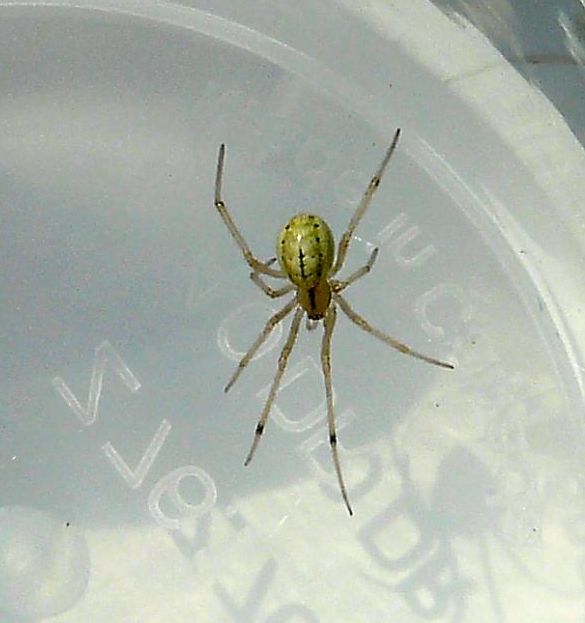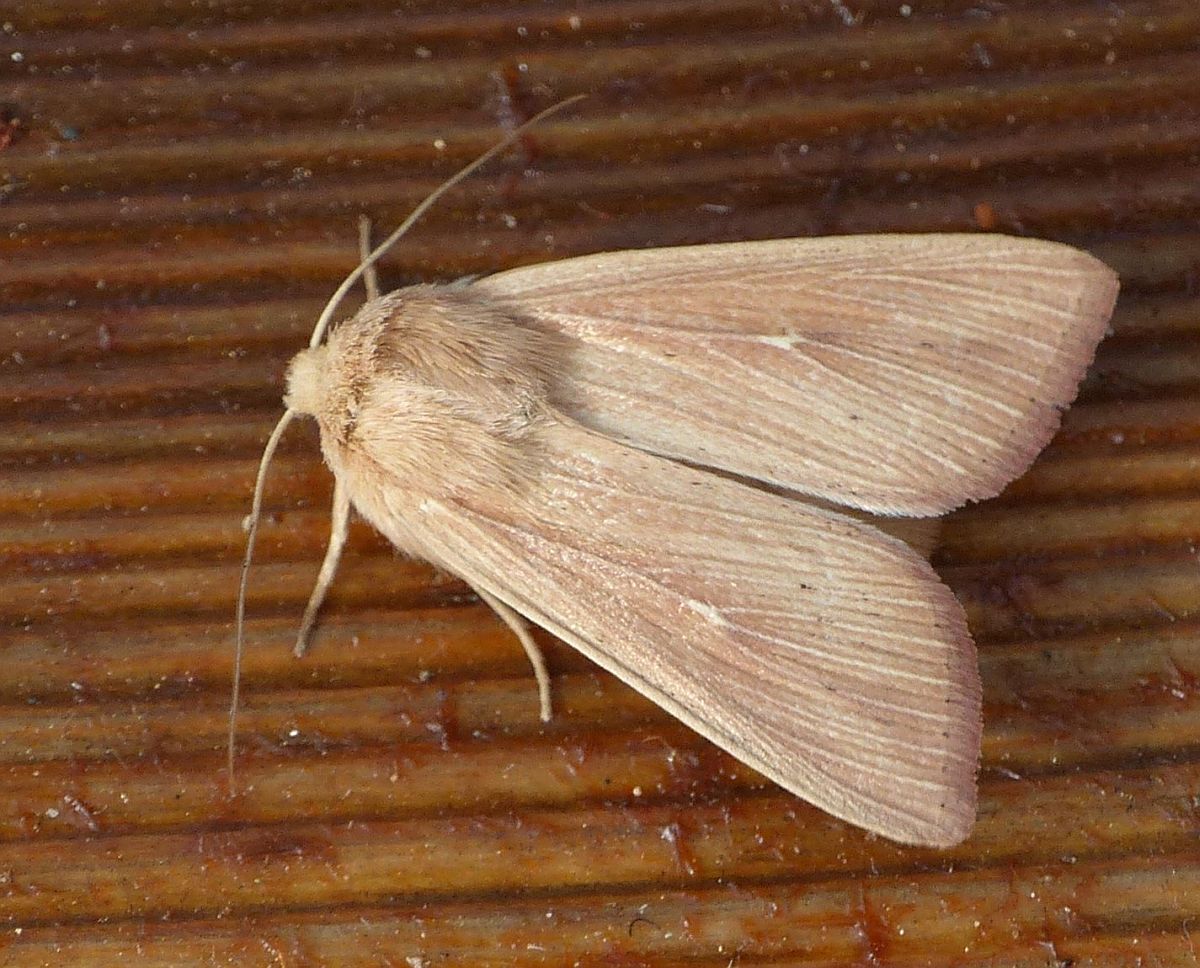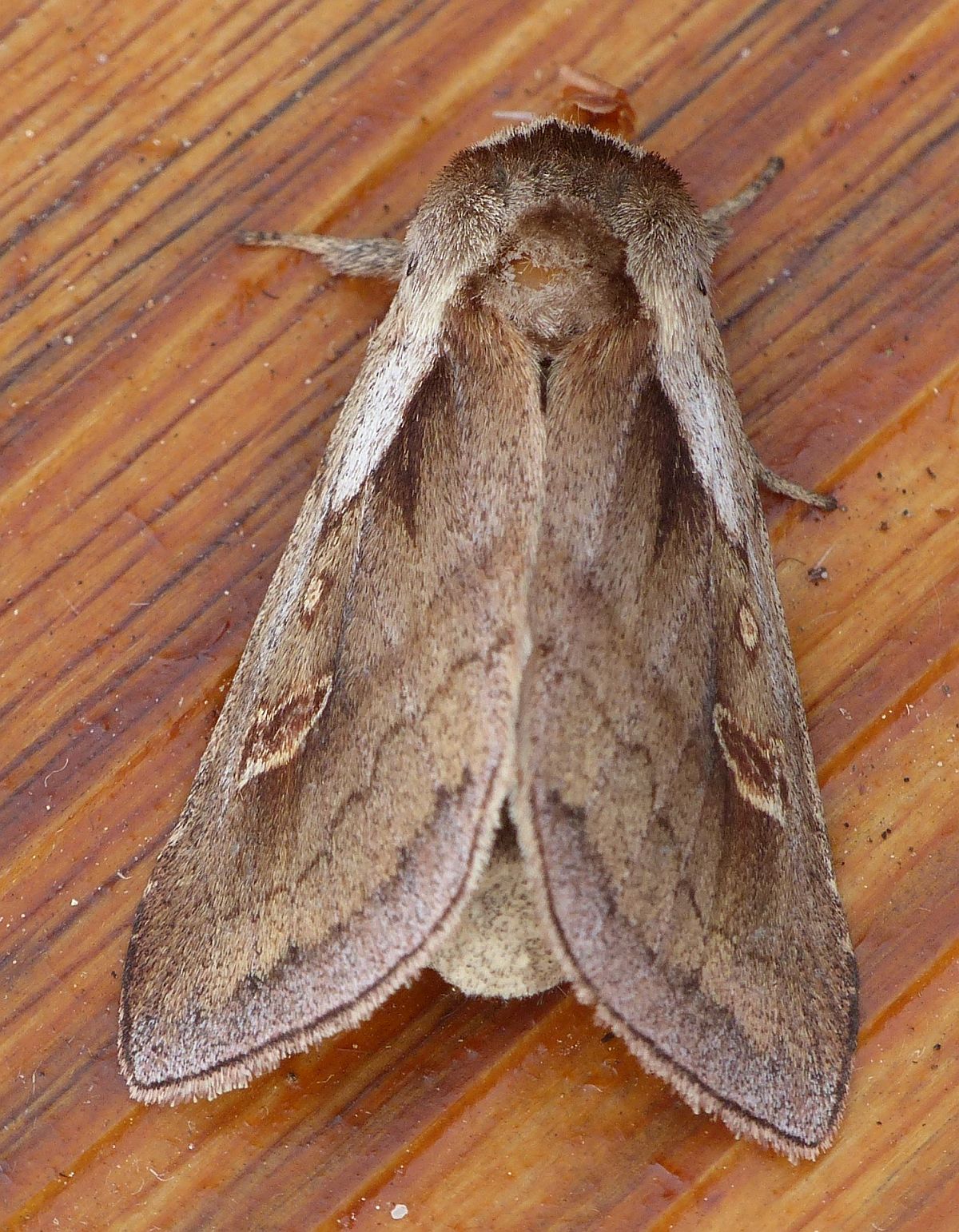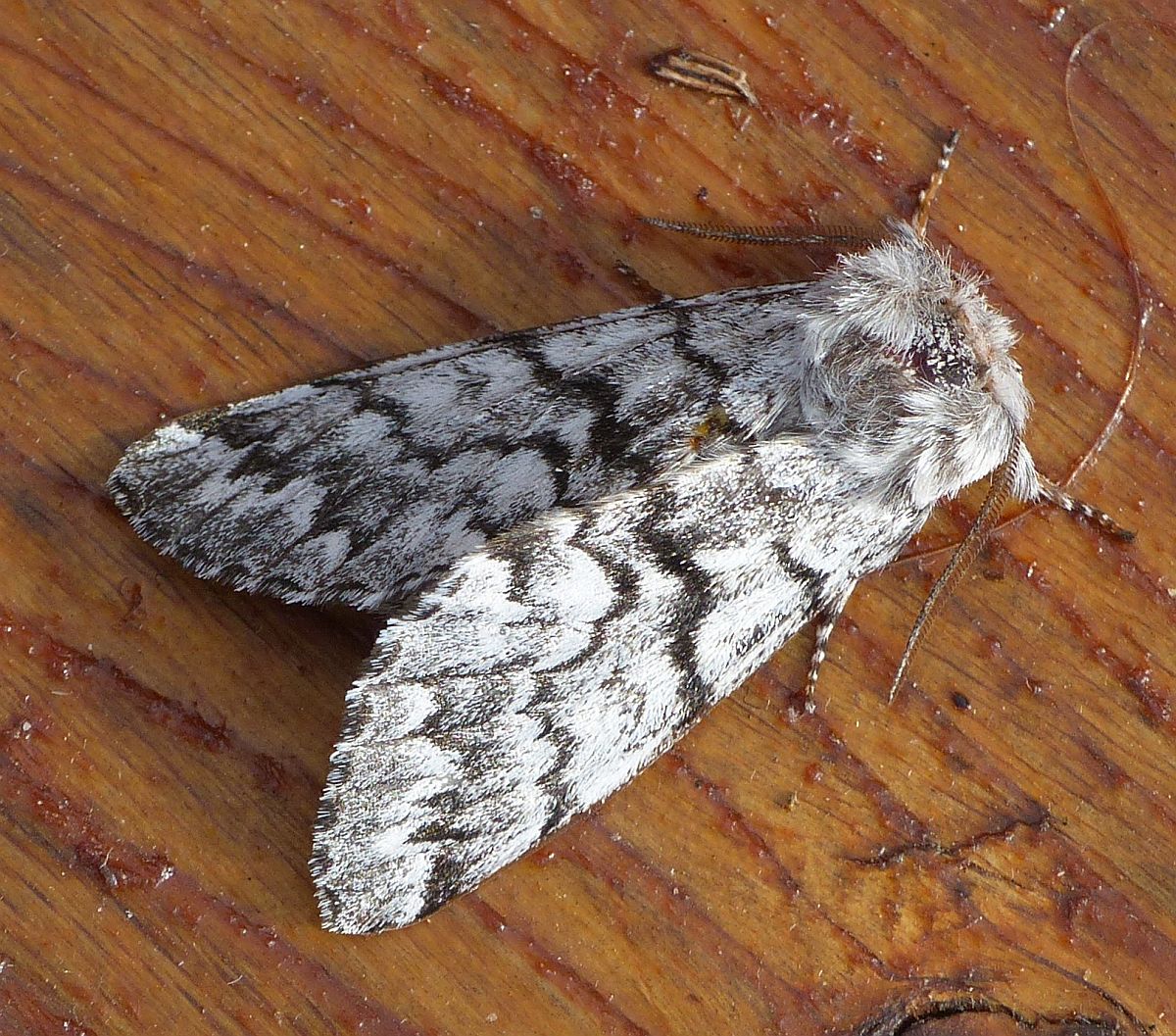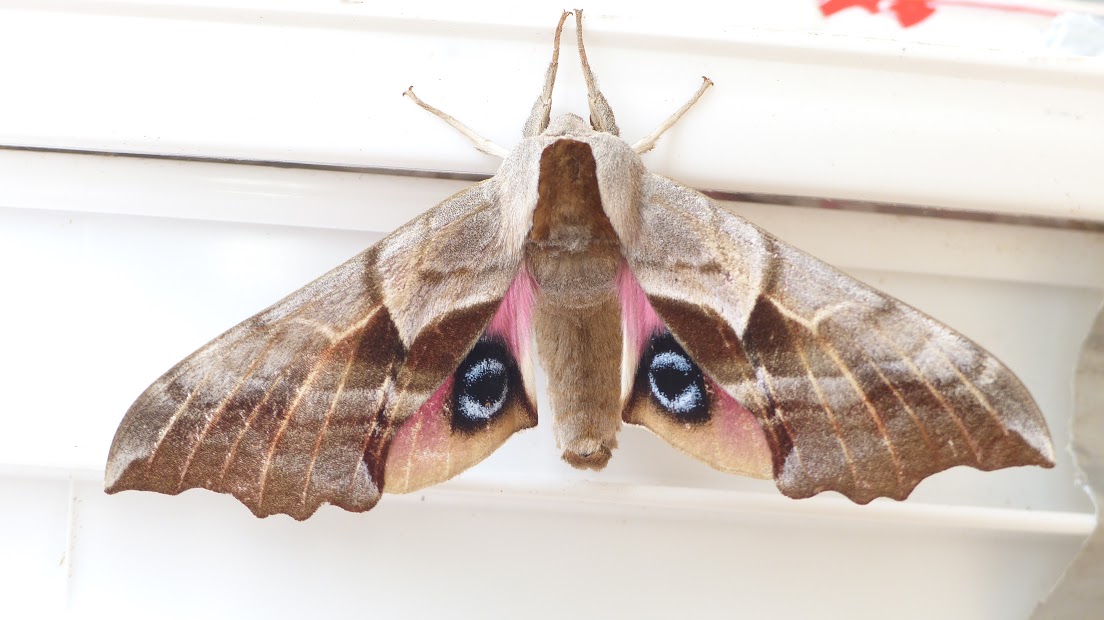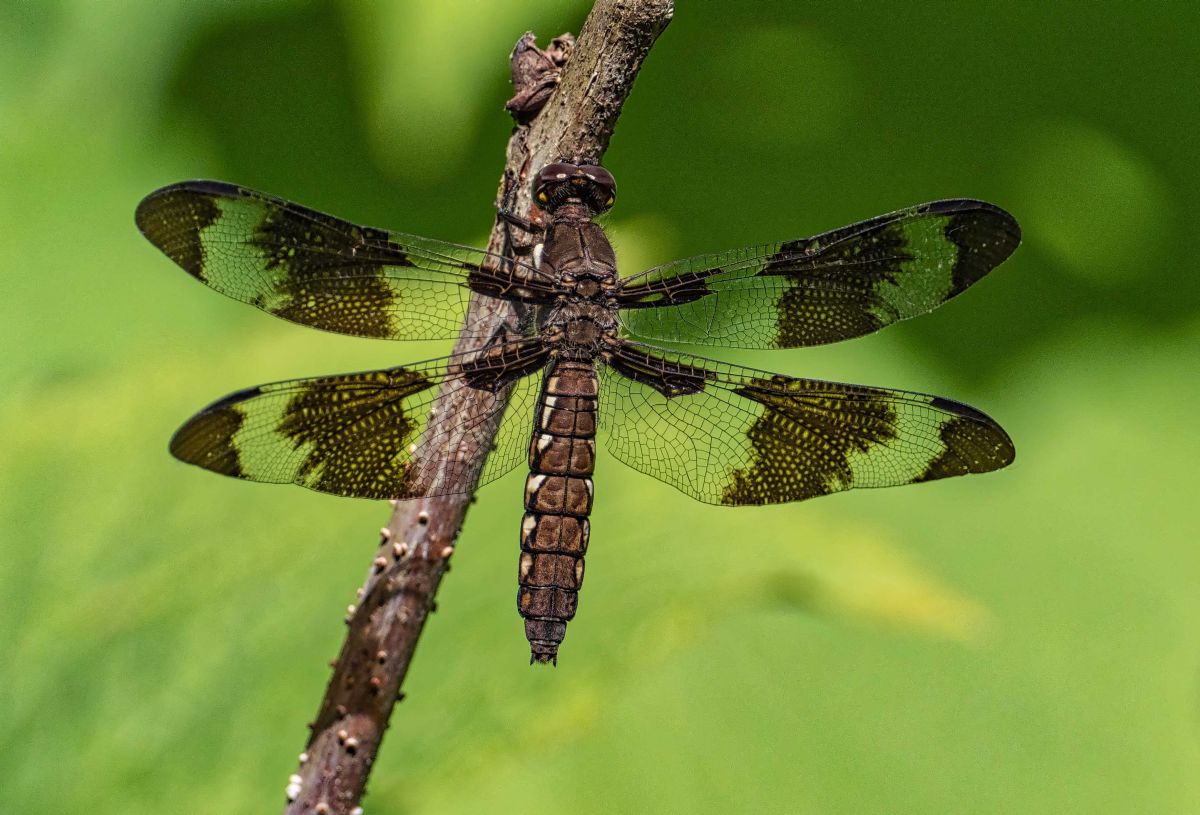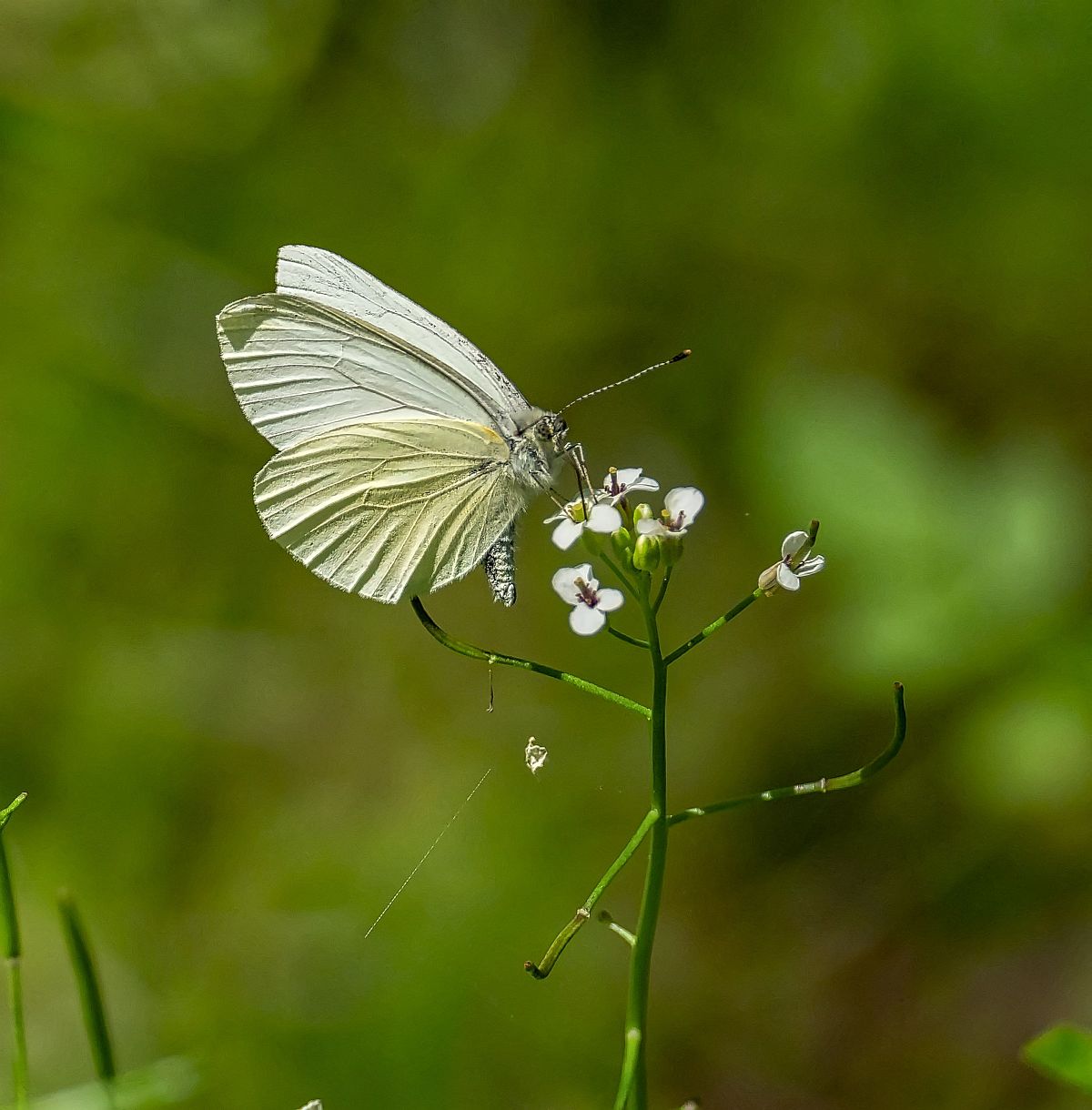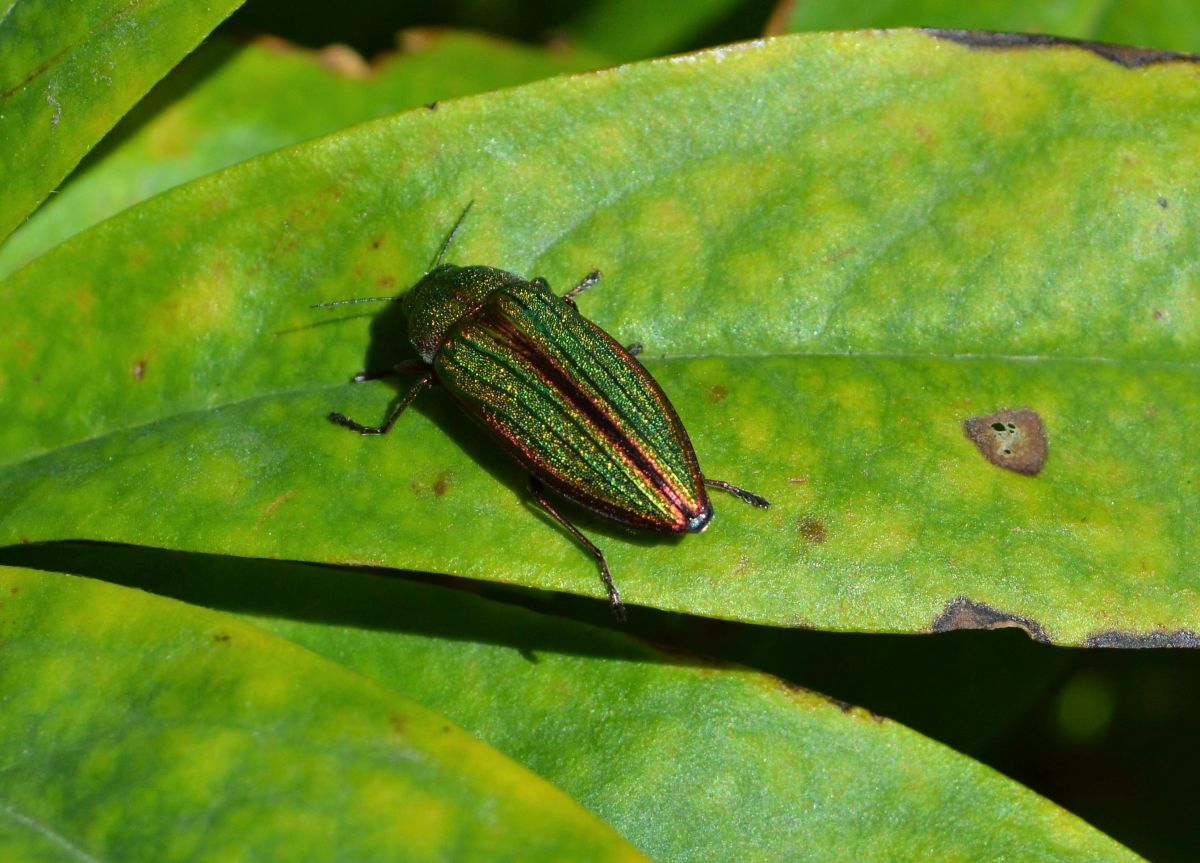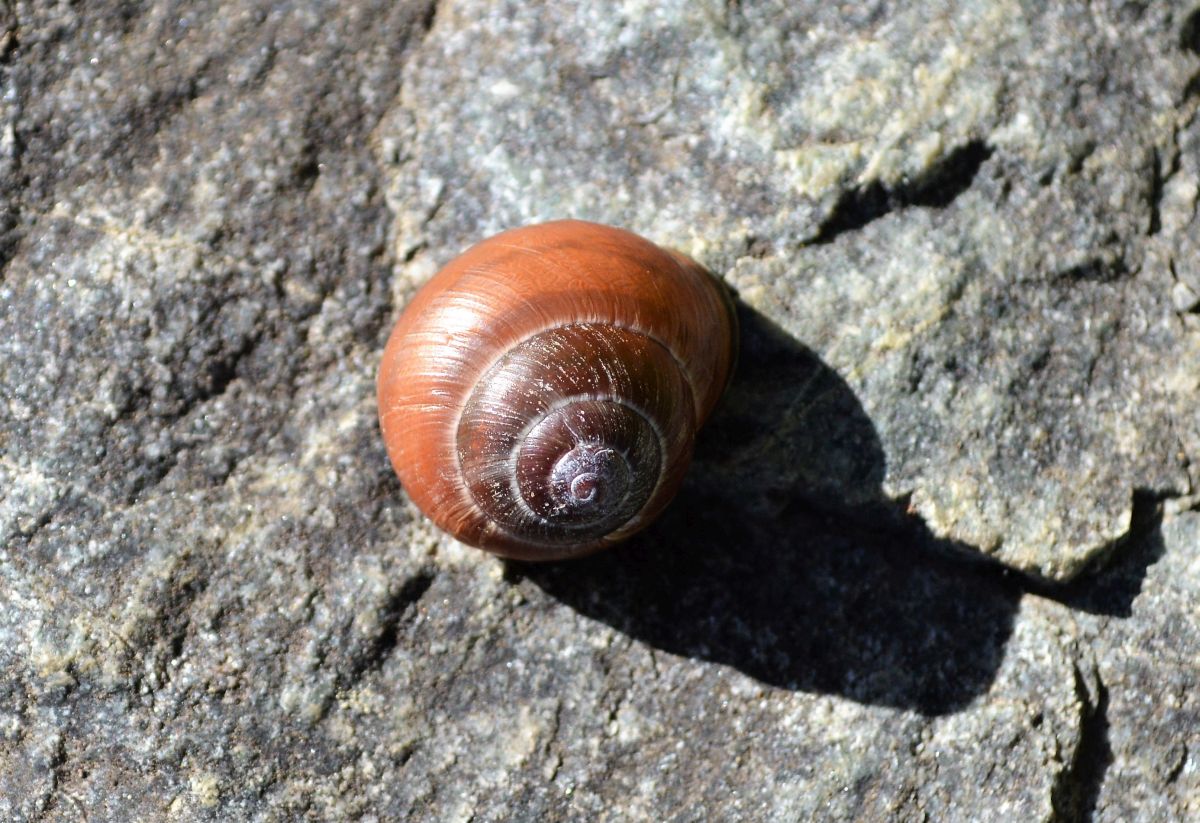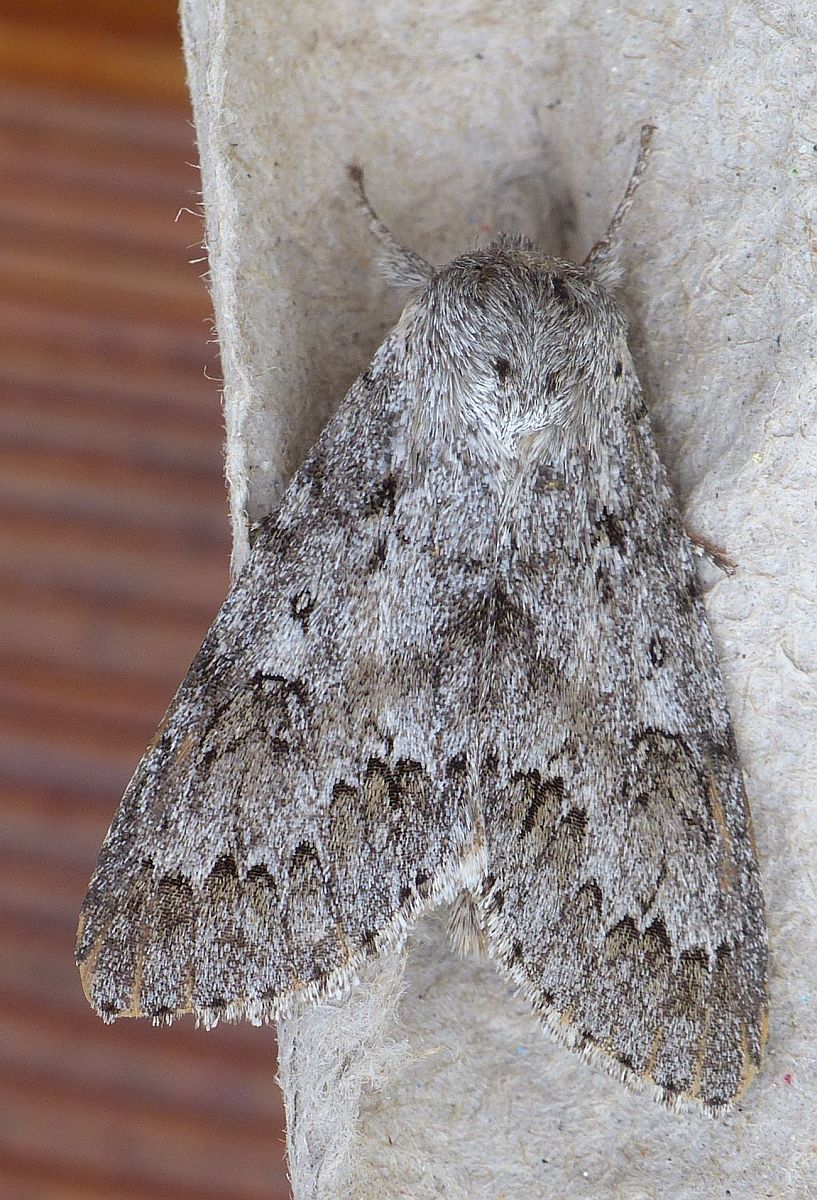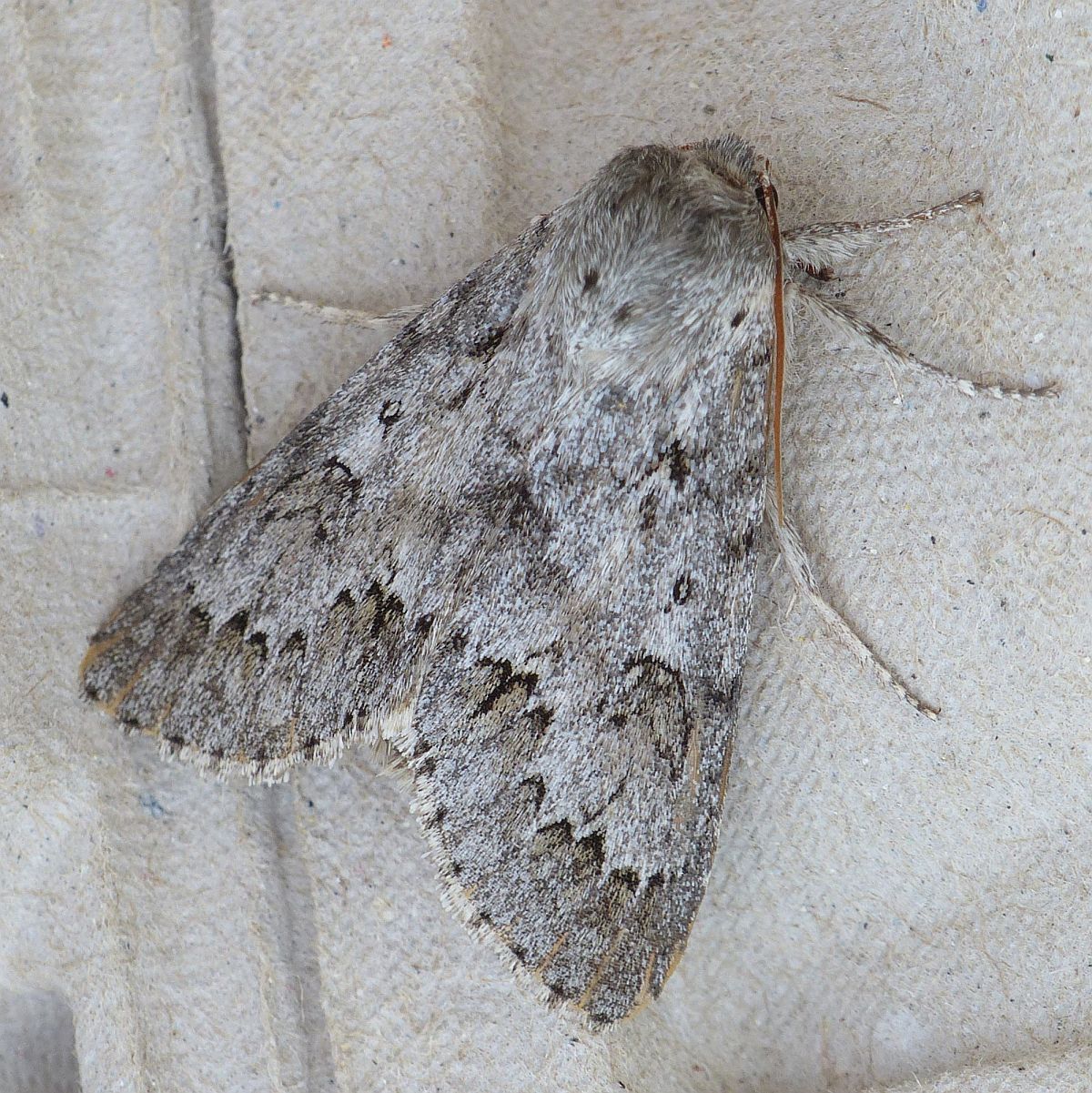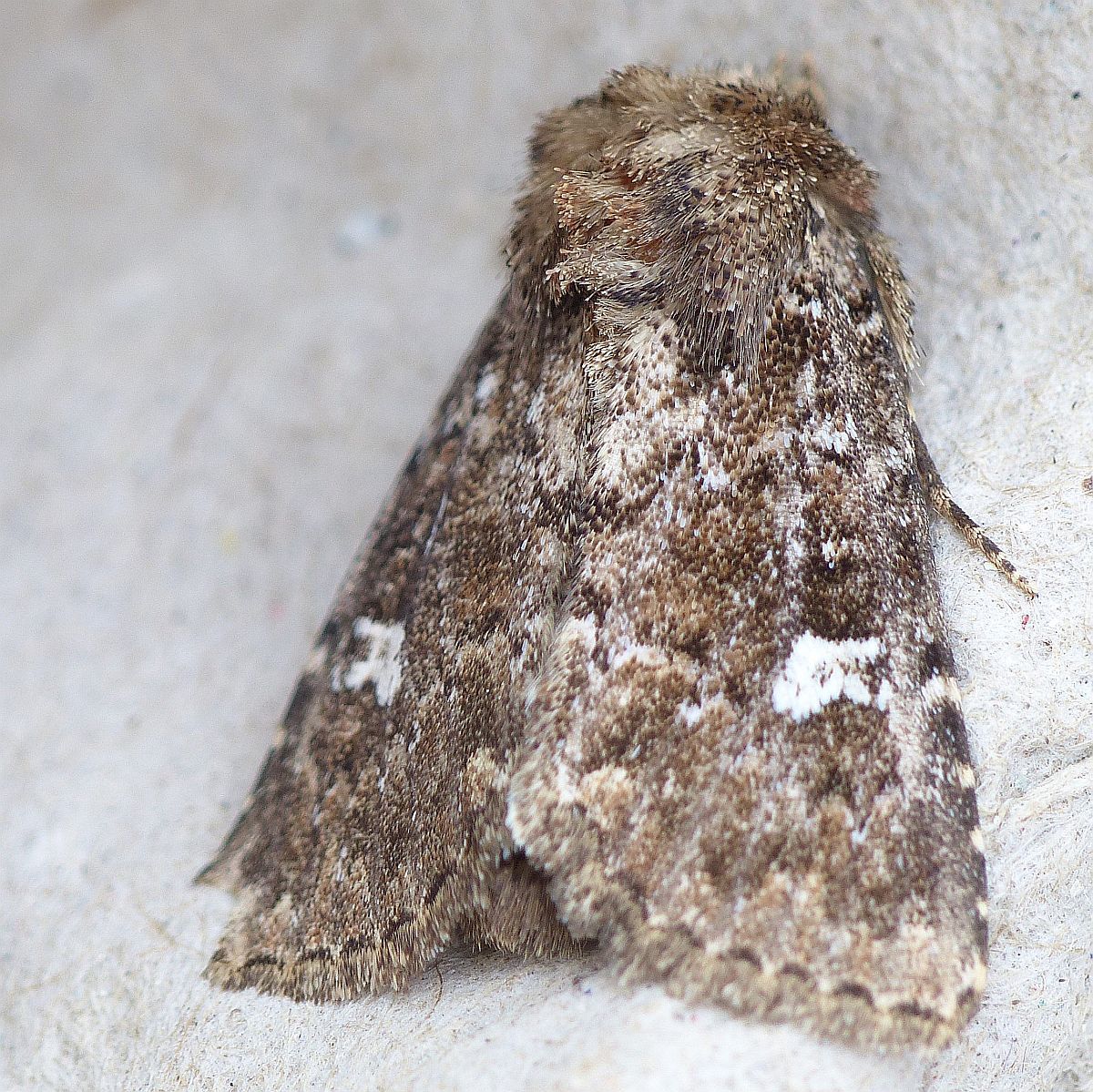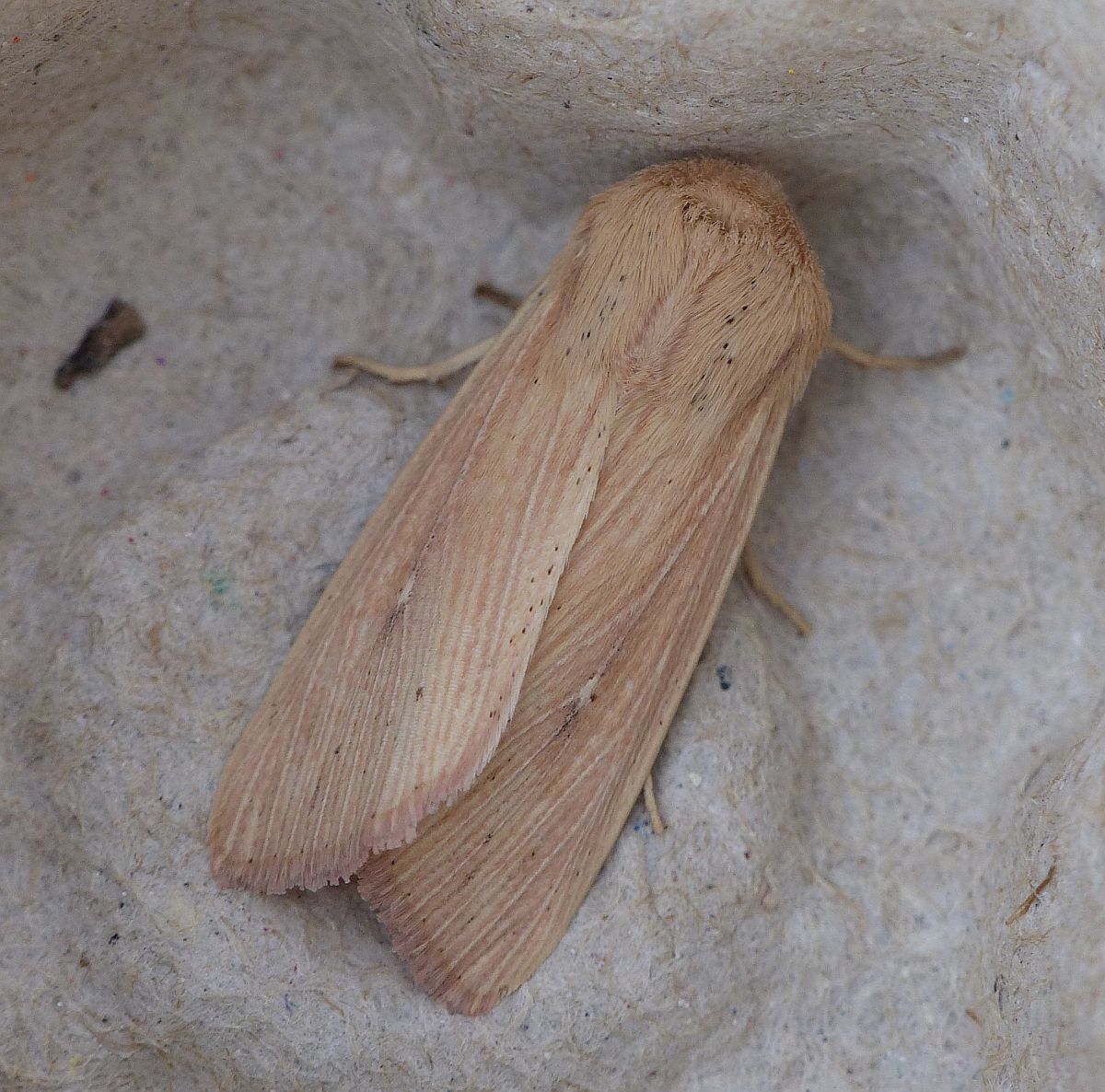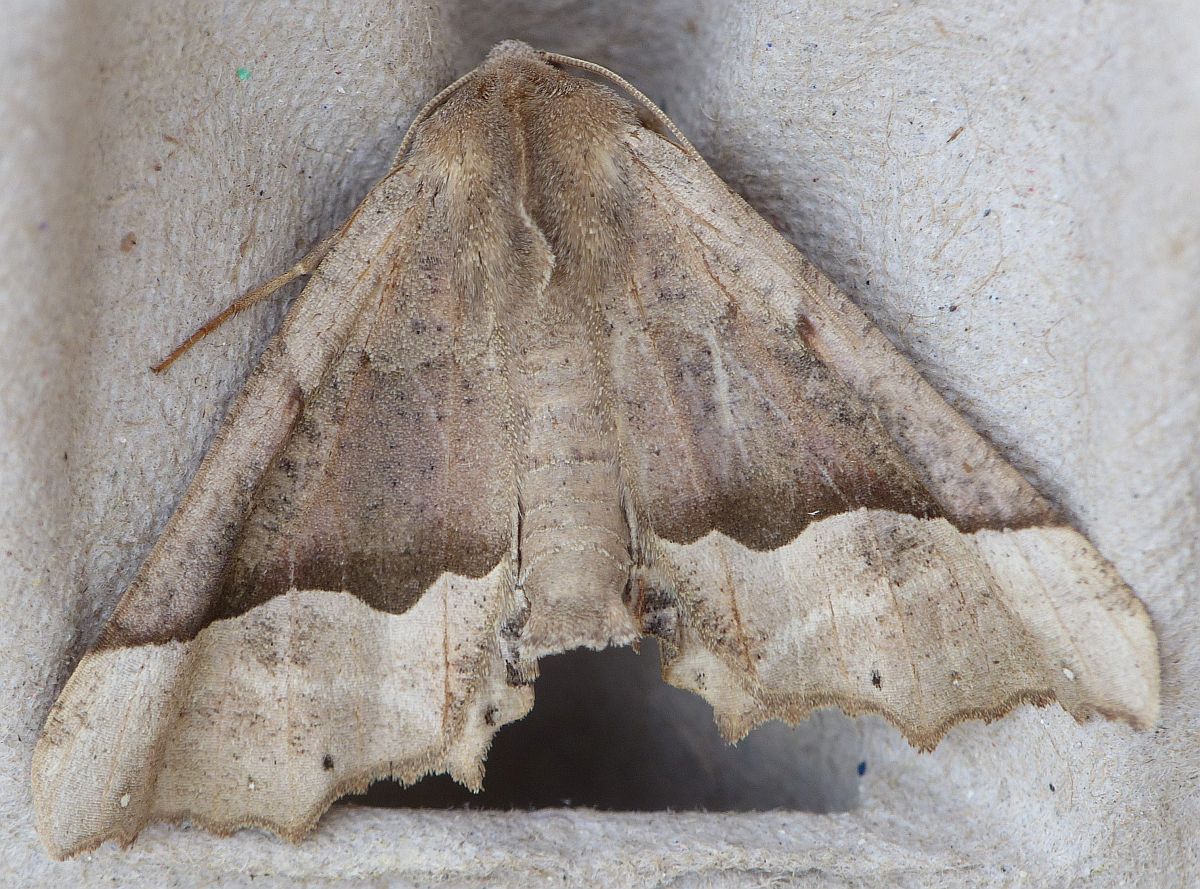July 11
Jeremy Tatum writes that last night (July 10) at 7:00 pm there were two Painted Ladies and a Red Admiral flying erratically at the top of Christmas Hill, doubtless because of the strong smell of marijuana there.
Marie O’Shaughnessy writes: There seem to be plenty of Lorquin’s Admirals along with Cabbage Whites and Western Tiger Swallowtails, especially in the Oak Bay area, with continuing dry and hot conditions. Lovely to see so many butterflies these days.

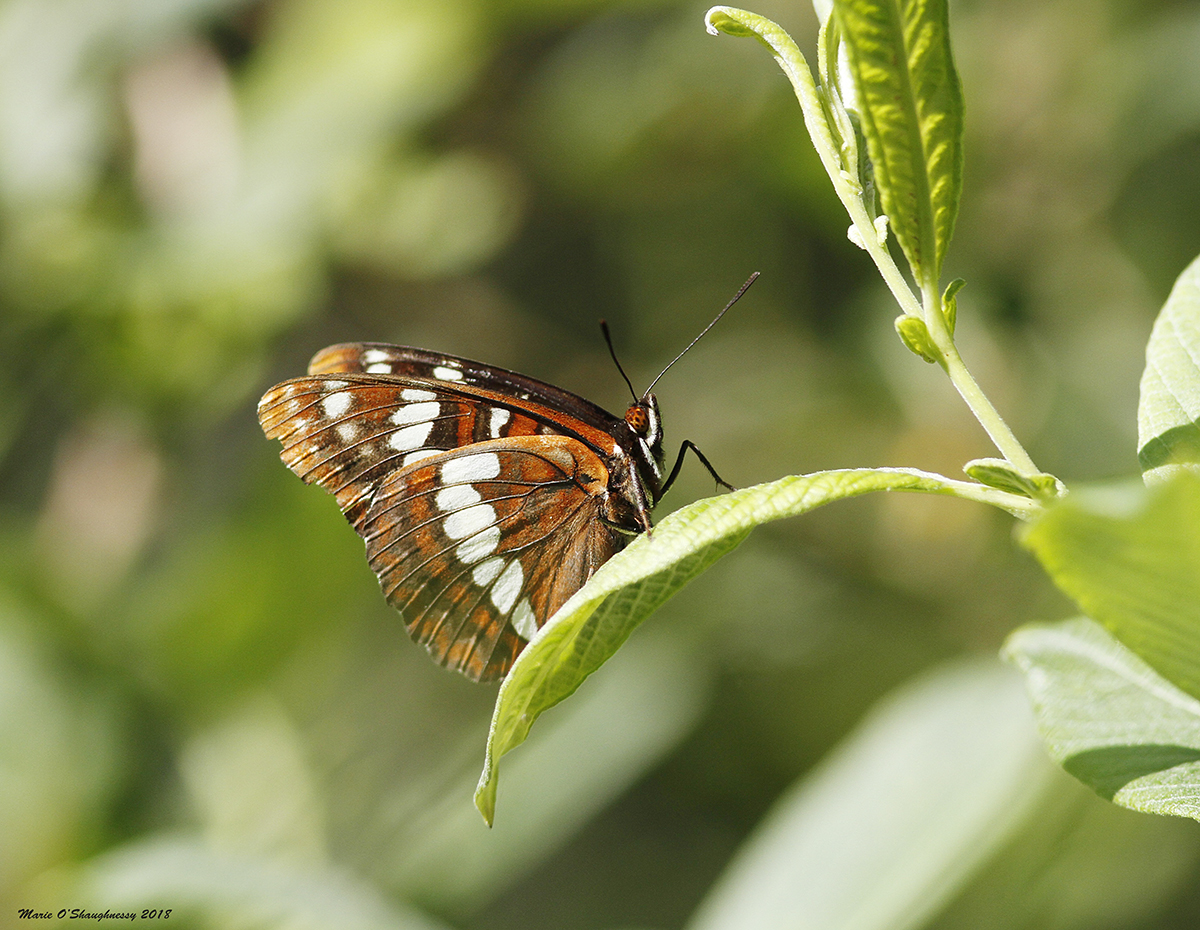
Lorquin’s Admiral Limenitis lorquini (Lep.: Nymphalidae) Marie O’Shaughnessy
Here is an interesting upperside-and-underside photograph of a tortricid photographed by Bryan Gates. It needs dissection to be absolutely sure of the identification, but we are grateful to Jason Dombrowskie for identifying it (with this caution) as probably Pandemis cerasana.

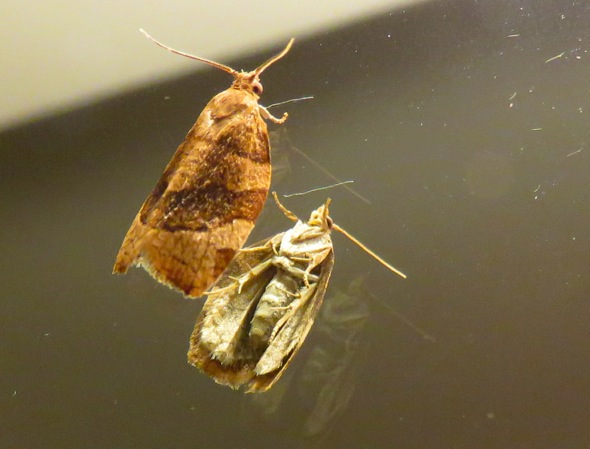
Probably Pandemis cerasana (Lep.: Tortricidae) Bryan Gates
Here are two more moths from Metchosin, photographed by Jochen Möhr and identified by Libby Avis.

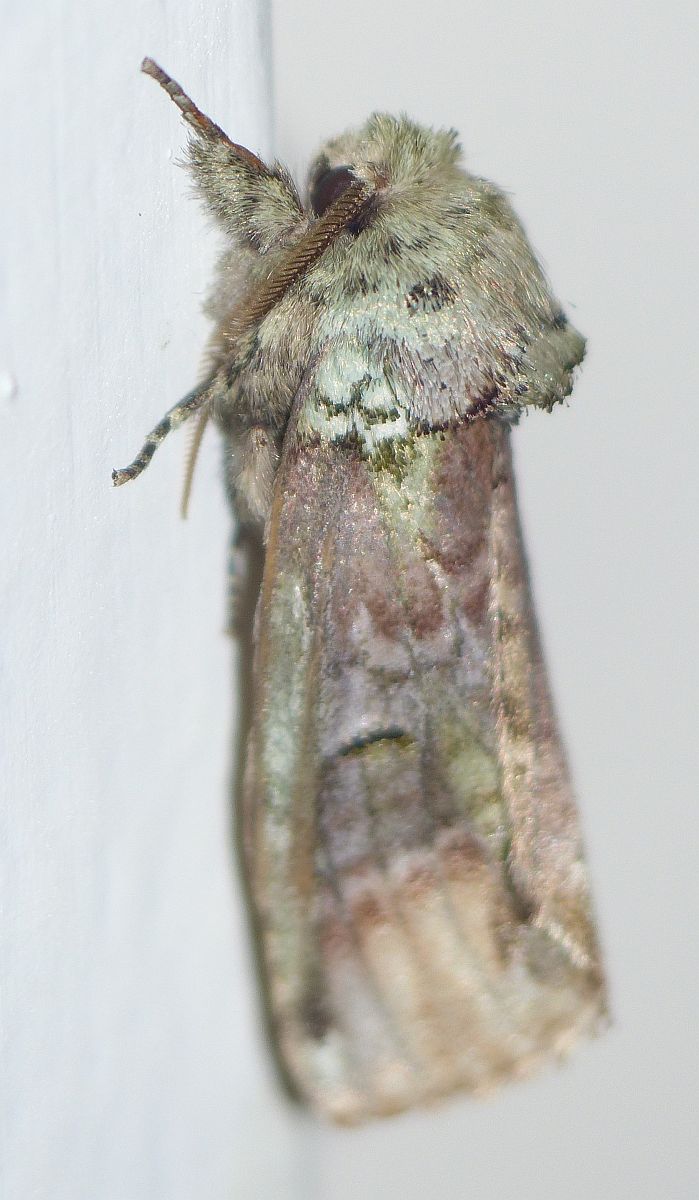
Schizura unicornis (Lep.: Notodontidae) Jochen Möhr

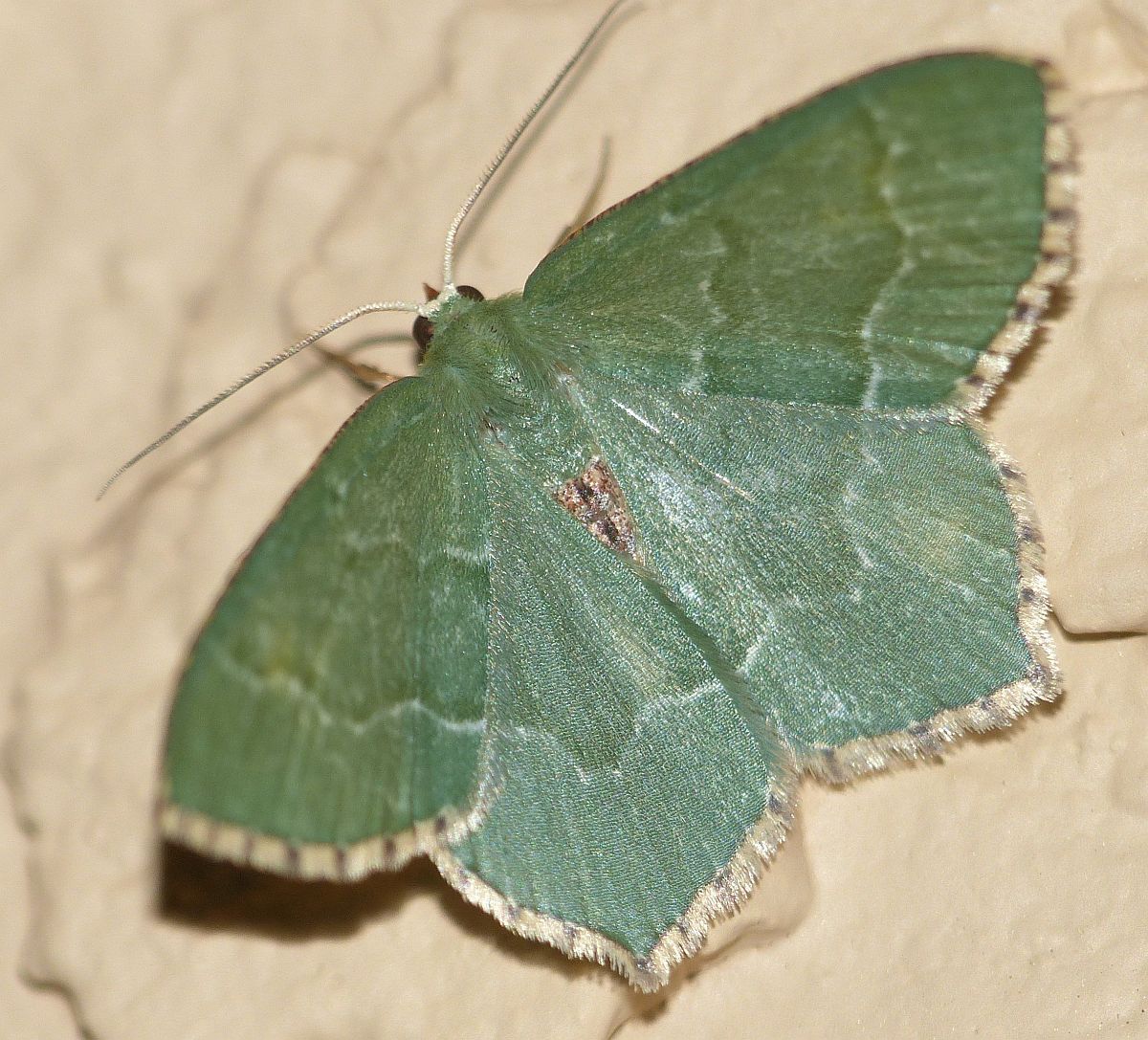
Common Emerald Hemithea aestivaria (Lep.: Geometridae) Jochen Möhr
Rosemary Jorna writes: Another sighting, this time from Kemp Lake. A swallowtail butterfly was moving oddly on my neighbour’s lawn, When I looked closely it was obviously dead and this wasp was butchering it (July 10, 2018, Kemp Lake area). It made several trips as the corpse was drifting round the yard in the wind. This was the best shot I got in tracking it on and off for about half an hour. Then the butterfly disappeared, probably blown away as the wind picked up

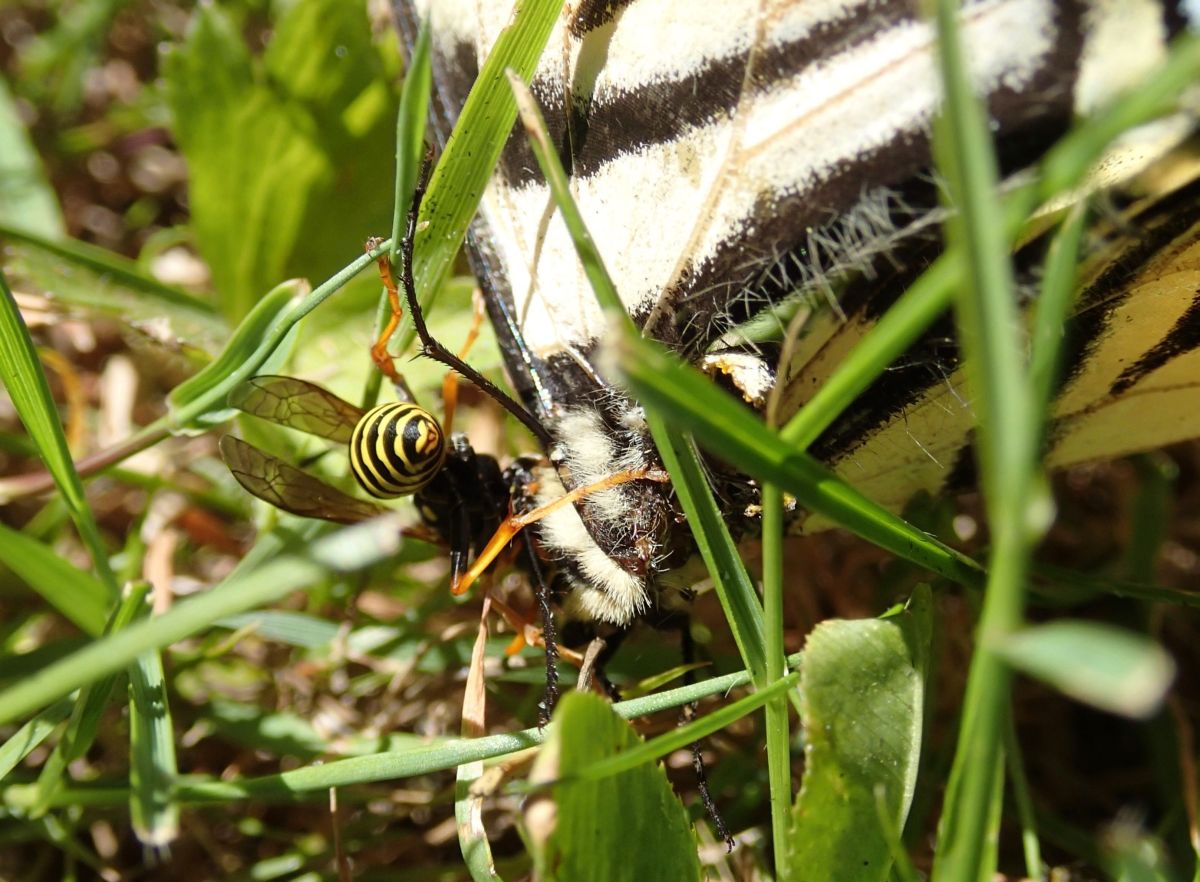
Wasp and swallowtail butterfly Rosemary Jorna

